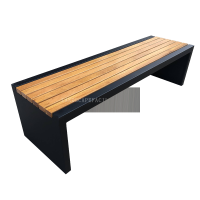Welcome to the website for landscape facilities products and knowledge.
Are there any recommended alignment or leveling techniques for uneven installation surfaces?
Installing fixtures, furniture, or appliances on uneven surfaces presents a common challenge that can compromise stability, function, and aesthetics. Proper alignment and leveling are not merely finishing touches; they are fundamental to a successful and durable installation. For professionals and DIY enthusiasts alike, mastering a few key techniques is essential.
The first and most critical step is always thorough surface preparation and assessment. You cannot fix a problem you haven't measured. Begin by using a long spirit level or a laser level to map the high and low points of the surface. For floors, a straightedge can also reveal gaps and humps. Mark these areas with chalk or a pencil. This diagnostic phase informs which of the following techniques you will employ.
One of the most versatile and immediate solutions for minor irregularities is shimming. Shims are thin, wedge-shaped pieces of material—often plastic, wood, or composite—that are inserted beneath the object to compensate for gaps and create a level plane. They are particularly useful for leveling appliances like washing machines, cabinetry, and furniture legs. The process involves placing the object in its intended position, identifying the gap, and systematically sliding shims into the void until the object is perfectly level and stable. For a clean finish, a utility knife can score and snap off any exposed portion of the shim.
For more significant discrepancies, especially in subfloors or under large tile installations, self-leveling compound (or underlayment) is the industry-preferred method. This cement-based product is mixed with water to a pourable consistency. Once poured onto the prepared surface, it flows seamlessly into depressions and low spots, creating a perfectly flat and smooth substrate. It is crucial to follow the manufacturer's instructions for mixing, priming the original surface, and allowing adequate curing time. This technique provides a flawless base for flooring materials like laminate, vinyl, or tile.
Beyond these primary methods, several other techniques prove invaluable. Adjustable leveling feet are integrated into many modern appliances, furniture, and shelving units. A simple turn of a bolt or screw allows for micro-adjustments on an uneven floor. In cabinetry installation, scribing is a precise technique where the cabinet is aligned to the highest point of an uneven wall, and the back edge is carefully cut or "scribed" to match the wall's contour perfectly. For heavy machinery or structural posts, metal leveling plates or epoxy grouts offer a high-strength, permanent solution.
Ultimately, the correct technique depends on the severity of the unevenness, the type of object being installed, and the material of the surface. A combination of methods is often used. For instance, a cabinet might be leveled with shims at the base and then scribed to the wall. Investing in a quality level, understanding these fundamental techniques, and prioritizing proper preparation will ensure your installations are not only level and stable but also built to last.
Related search:

Recommendation
Modern Stainless Steel Begonia Wood Park Chair Outdoor Courtyard Leisure Sun Protection Bench Long Seat